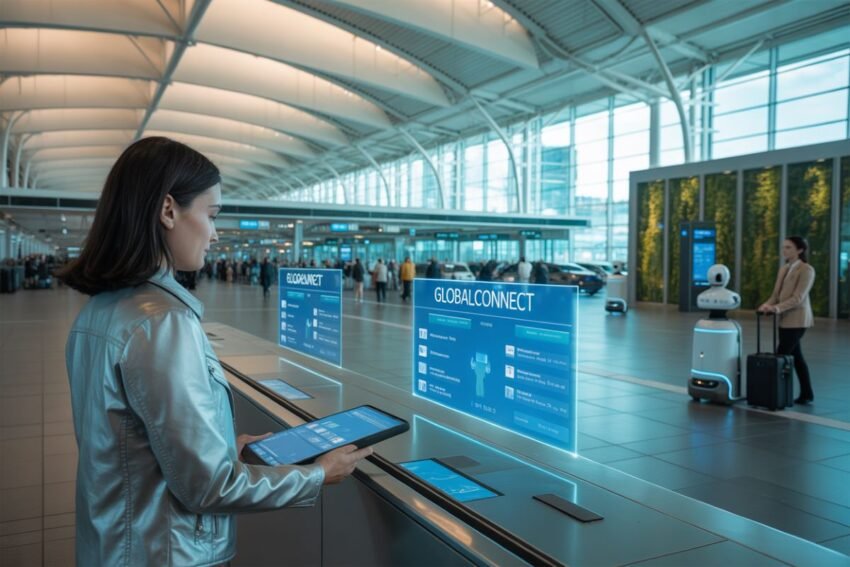Introduction
Applications of AI in emergency medicine
Benefits of AI in emergency care
Challenges and limitations
Conclusions
References
Further reading
Artificial intelligence is transforming emergency medicine by enhancing triage, diagnosis, and resource management, while also facing challenges related to ethics, bias, and regulation. This article explores its applications, benefits, and limitations in real-world clinical care.
Image Credit: JHEVPhoto / Shutterstock.com
Introduction
Artificial intelligence (AI) is an interdisciplinary field that integrates computer science, mathematics, and related disciplines to create algorithms that can perform tasks conventionally restricted to human intelligence. AI algorithms utilize data-driven analysis, probabilistic modelling, and iterative optimization to learn, solve problems, and make decisions.1
Unprecedented computational power, widely available and open-access electronic health data, as well as algorithmic breakthroughs, are rapidly transitioning AI from a conceptual technology to an integrated component of modern healthcare.1 Despite projected growth of the global AI healthcare market, its incorporation into clinical practice remains limited due to the relative nascency of this technology and lack of standardization.2
In emergency medicine, AI has gained traction not only in clinical decision support (CDS) but also in digital twin modeling of patients, predictive analytics for emergency department (ED) flow, and integration with prehospital emergency medical services (EMS).3,8,9
Additionally, recent primers emphasize the importance of familiarizing nonexpert clinicians with AI principles, terminology, and limitations to support safe and informed adoption.11
Applications of AI in emergency medicine
AI-driven triage algorithms can analyze large datasets without bias and with significantly greater depth than conventional models, enabling clinicians to prioritize patients more effectively compared to traditional methods.5 In fact, machine learning models consistently demonstrate superior discrimination and performance capabilities for predicting emergency outcomes like hospital admission or intensive care unit (ICU) transfer and conditions like stroke, sepsis, and myocardial infarction.4,5
Medical imaging and the interpretation of these images are among the most mature applications of AI, as numerous deep learning algorithms have been trained to analyze X-rays, computed tomography (CT) scans, and ultrasound images.1 For these applications, AI technologies have successfully detected abnormalities like intracranial hemorrhage, fractures, and pneumothorax with high accuracy to support clinicians and reduce conventional diagnostic delays.1 Explainable AI (XAI) methods are increasingly being incorporated into these models to enhance clinician trust by making diagnostic outputs more interpretable.7,11
AI-powered CDS systems have also been developed to integrate real-time data from electronic health records (EHRs) and provide timely recommendations.1 For example, AI models have been used to analyze electrocardiograms (ECGs) to predict impending cardiac arrest. Machine learning-assisted alerts have also been shown to improve the time to antibiotic administration.1 More recently, scoping reviews highlight that CDS tools in emergency departments have been used to improve sepsis management, diagnostic accuracy, and disposition planning.3 Published case examples include Duke’s “Sepsis Watch” system and Viz.ai for subdural hematoma detection, which illustrate real-world clinical adoption.11
AI-based predictive analytics can mitigate ED crowding by forecasting patient arrivals and anticipating surges. This application of AI allows hospitals to transition away from a reactive to a proactive staffing model that ensures the optimal allocation of limited resources like beds.1,6
AI-powered symptom checkers and chatbots can simultaneously guide patients in self-assessing the urgency of their condition. Emergency dispatchers can also utilize natural language processing to recognize conditions, such as out-of-hospital cardiac arrest, faster and more accurately, despite limitations in first-responder knowledge.1 EMS applications include AI-driven decision support for ambulance routing, prehospital risk stratification, and remote monitoring to improve patient outcomes before hospital arrival.6,11
Another emerging domain is the use of digital twins, virtual patient models that simulate disease progression and treatment response, which could help personalize emergency care interventions and optimize resource use.9
Benefits of AI in emergency care
AI algorithms can rapidly process and synthesize vast quantities of data, thereby leading to faster and more precise assessments.4 This significantly reduces conventional image interpretation delays, with some AI models demonstrating performance superior to that of human specialists in specific tasks.1
AI can provide several benefits to the existing public health infrastructure. By accurately predicting patient volume, AI can enable hospitals to better manage patient throughput, reduce system inefficiencies, alleviate overcrowding, and shorten patient wait times.6 These predictive tools also support disaster preparedness and surge capacity planning, strengthening system resilience.4,5
For administrative purposes, AI can automate routine and time-consuming tasks using ambient listening technologies and generative AI-based clinical summaries. The adoption of AI into these aspects of healthcare has the potential to reduce clinician burnout, as well as improve both patient satisfaction and provider well-being.1,4 Furthermore, AI can facilitate continuous quality improvement by identifying patterns in adverse events and enabling evidence-based policy development.7,11
High-tech hospital uses artificial intelligence in patient care
Challenges and limitations
Despite its future promise and validated benefits, the integration of AI into emergency medicine is associated with numerous technical, ethical, and legal challenges that must be addressed to ensure its safe and equitable deployment.1,4,6
A foundational principle of machine learning is that models are only as good as the data on which they are trained. Thus, models trained on historical health data containing latent biases, such as societal inequities or non-generalizable sampling designs, could learn and amplify these biases at scale.6 Unfortunately, these underrepresented are often the exact patient subpopulations like women, racial minorities, and other marginalized groups that would benefit the most from AI integration.2
A significant practical barrier, especially in developing and underdeveloped regions, is the difficulty of integrating novel AI systems into existing, often fragmented, hospital intelligence technologies (IT) infrastructure. The lack of data interoperability between different EHR systems makes it difficult to seamlessly integrate AI solutions, which could increase the complexity and associated costs of implementation.1 Even in advanced settings, CDS systems face challenges in workflow integration and clinician adoption, which can limit their real-world impact.3,11
AI models require access to massive datasets of sensitive patient information, which carries significant risks to patient privacy and data security.6,7 This is compounded by the “black box” problem, in which the internal decision-making processes of complex deep learning models are opaque and not readily interpretable. Explainability and transparency are therefore critical to support clinical accountability and medico-legal decision-making.7,11
Regulatory concerns are increasingly important: AI tools classified as software as a medical device (SaMD) fall under U.S. FDA oversight, requiring evidence of safety, effectiveness, and lifecycle monitoring.11
Both automation complacency, which reflects an over-reliance on AI, as well as selective adherence to only accept advice that confirms pre-existing beliefs, represent practical and ongoing challenges in clinical-AI interactions.1
 Image Credit: Sutipond Somnam / Shutterstock.com
Image Credit: Sutipond Somnam / Shutterstock.com
Conclusions
AI represents a transformative force in emergency medicine with the potential to accelerate and improve the accuracy of patient triage, diagnoses, and resource management, thereby leading to a more efficient and resilient global emergency care system. Nevertheless, the naivety and inherent limitations associated with AI emphasize the importance of using this technology as a tool to augment and empower human clinicians, rather than replace or undermine them. Future directions include broader evaluation of digital twins, real-world validation of CDS systems, EMS-focused AI interventions, and clinician education for nonexperts, which will be key to realizing AI’s full potential in emergency medicine.1,3,8,9,11
The role of digital twins in transforming emergency medicine.9
As these technologies continue to advance and become more readily accessible, policymakers, regulators, and healthcare leaders must collaborate to create robust ethical and legal frameworks that provide clear guidance on data privacy, algorithmic transparency, and legal liability. These efforts will ensure that the principles of safety, fairness, and accountability guide the gradual deployment of AI into the global healthcare sector.
References
- Chenais, G., Lagarde, E., & Gil-Jardiné, C. (2023). Artificial Intelligence in Emergency Medicine: Viewpoint of Current Applications and Foreseeable Opportunities and Challenges. Journal of Medical Internet Research, 25, e40031. DOI:10.2196/40031, https://www.jmir.org/2023/1/e40031
- Bajwa, J., Munir, U., Nori, A., & Williams, B. (2021). Artificial intelligence in healthcare: transforming the practice of medicine. Future Healthcare Journal, 8(2), e188-e194. DOI:10.7861/fhj.2021-0095, https://www.sciencedirect.com/science/article/pii/S2514664524005277?via%3Dihub
- Kareemi, H., Yadav, K., Price, C., et al. (2025). Artificial intelligence–based clinical decision support in the emergency department: A scoping review. Academic Emergency Medicine, 32(4), 386-395. DOI:10.1111/acem.15099, https://onlinelibrary.wiley.com/doi/full/10.1111/acem.15099
- Da’Costa, A., Teke, J., Origbo, J. E., et al. (2025). AI-driven triage in emergency departments: A review of benefits, challenges, and future directions. International Journal of Medical Informatics, 197, 105838. DOI:10.1016/j.ijmedinf.2025.105838, https://www.sciencedirect.com/science/article/pii/S1386505625000164
- Piliuk, K., & Tomforde, S. (2023). Artificial intelligence in emergency medicine. A systematic literature review. International Journal of Medical Informatics, 180, 105274. DOI:10.1016/j.ijmedinf.2023.105274, https://www.sciencedirect.com/science/article/pii/S1386505623002927
- Rosemaro, E., Anasica, & Zellar, I. (2025). AI-Based Decision Support Systems for Emergency Medical Services. International Journal of Recent Advances in Engineering and Technology, 13(1), 6-10. https://journals.mriindia.com/index.php/ijraet/article/view/55
- Al Kuwaiti, A., Nazer, K., Al-Reedy, A., et al. (2023). A Review of the Role of Artificial Intelligence in Healthcare. Journal of Personalized Medicine, 13(6), 951. DOI:10.3390/jpm13060951, https://www.mdpi.com/2075-4426/13/6/951
- Li, F., Ruijs, N., & Lu, Y. (2022). Ethics & AI: A Systematic Review on Ethical Concerns and Related Strategies for Designing with AI in Healthcare. AI, 4(1), 28-53. DOI:10.3390/ai4010003, https://www.mdpi.com/2673-2688/4/1/3
- Li, H., Zhang, J., Zhang, N., & Zhu, B. (2025). Advancing Emergency Care With Digital Twins. JMIR Aging, 8, e71777. DOI:10.2196/71777, https://aging.jmir.org/2025/1/e71777/
- Smith, M. E., Zalesky, C. C., Lee, S., Gottlieb, M., Adhikari, S., Goebel, M., Wegman, M., Garg, N., Lam, S. H. F. (2025). Artificial Intelligence in Emergency Medicine: A Primer for the Nonexpert. JACEP Open, 6, 100051. DOI: 10.1016/j.acepjo.2025.100051, https://www.sciencedirect.com/science/article/pii/S2688115225000098
Further Reading
Last Updated: Sep 15, 2025













































